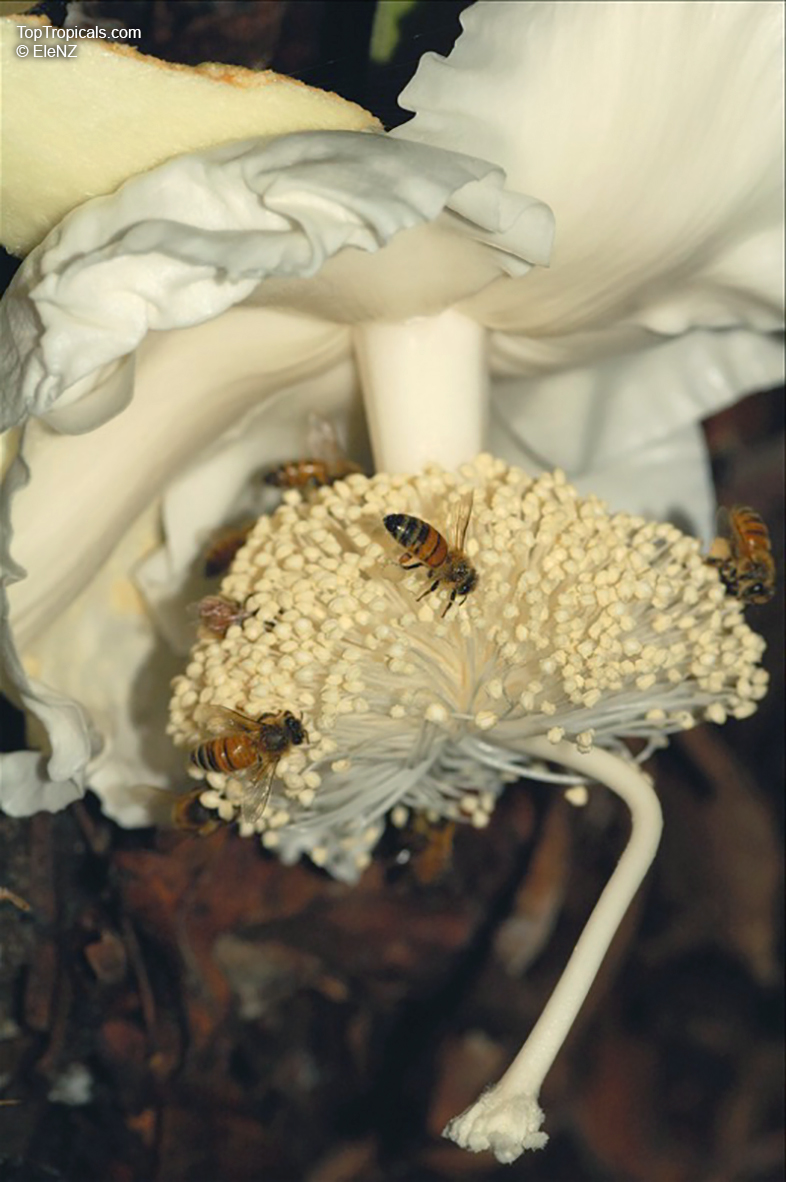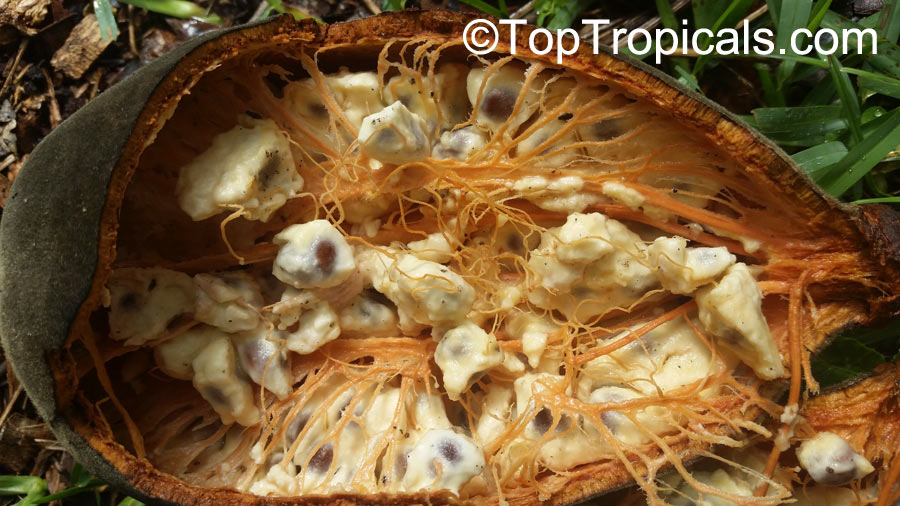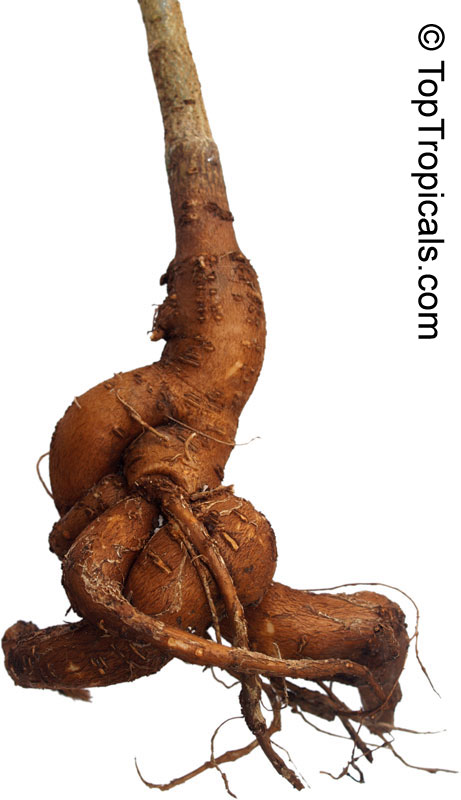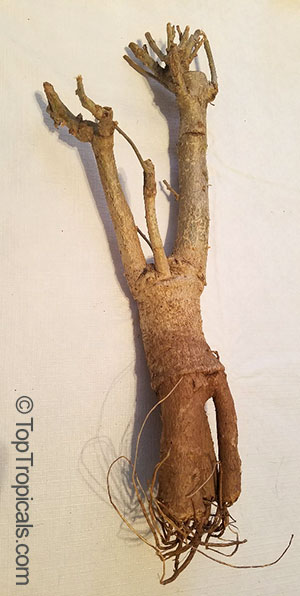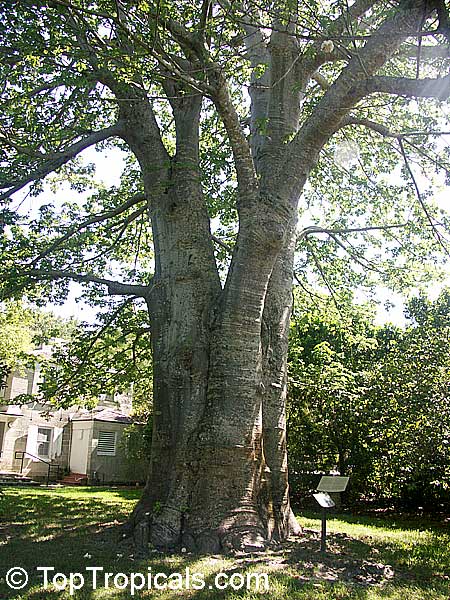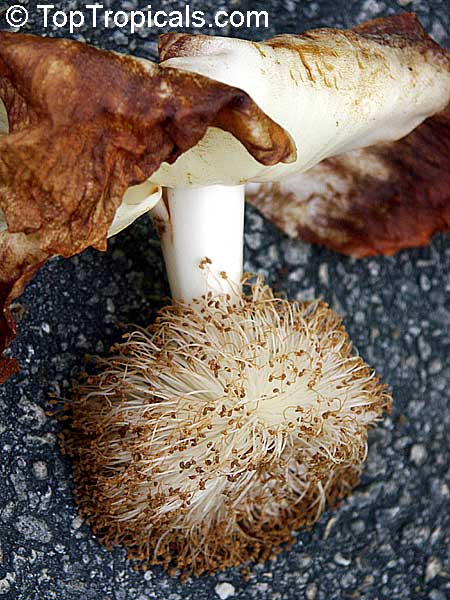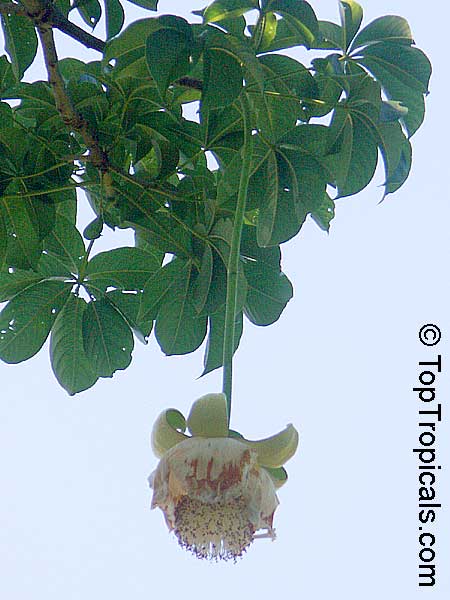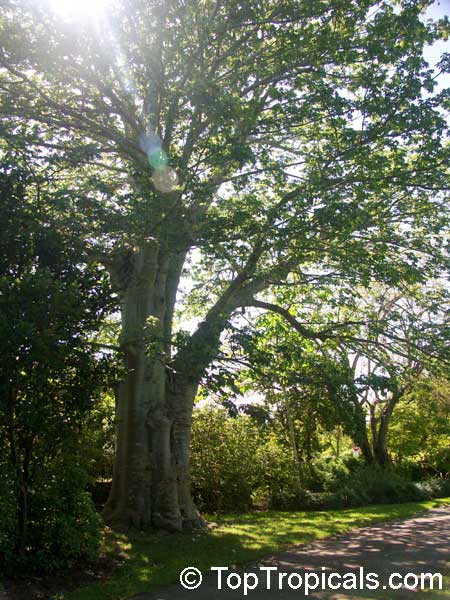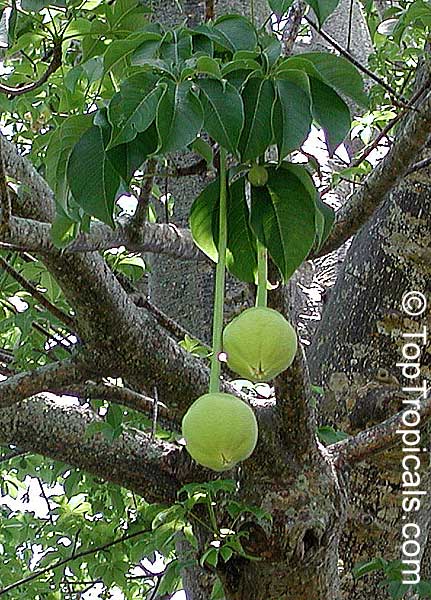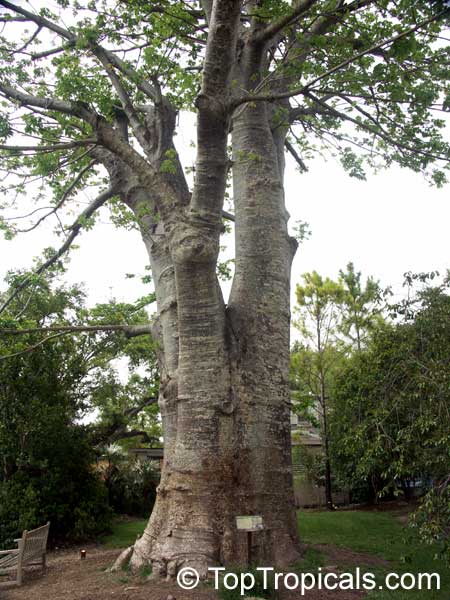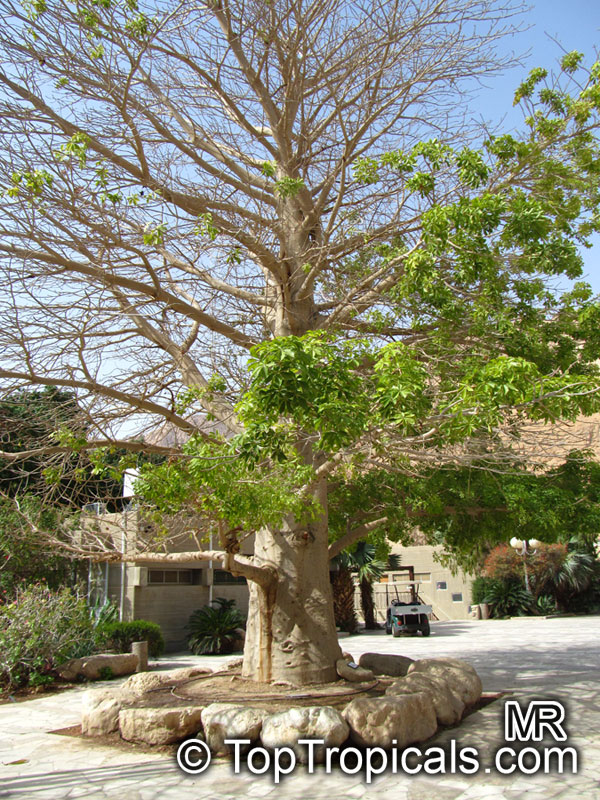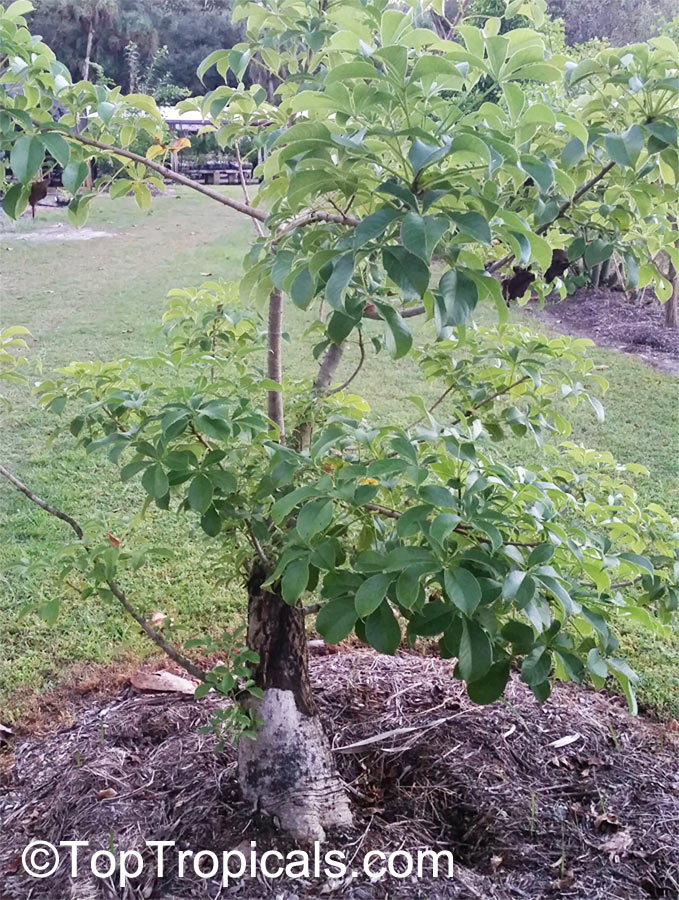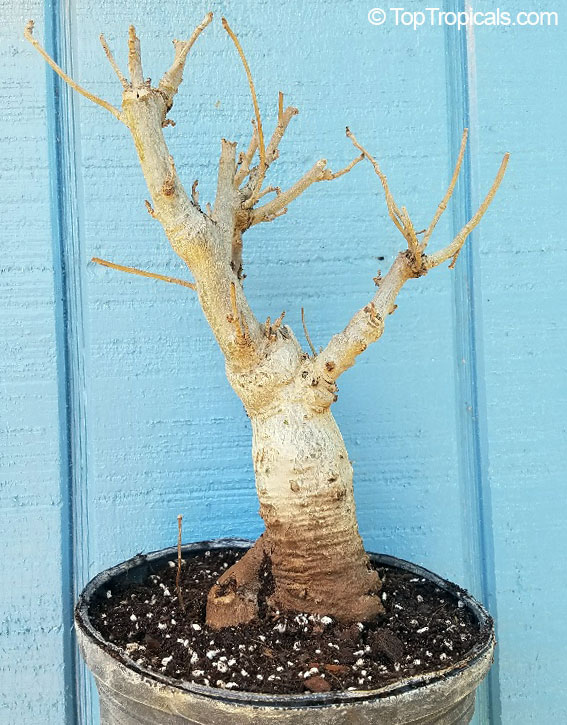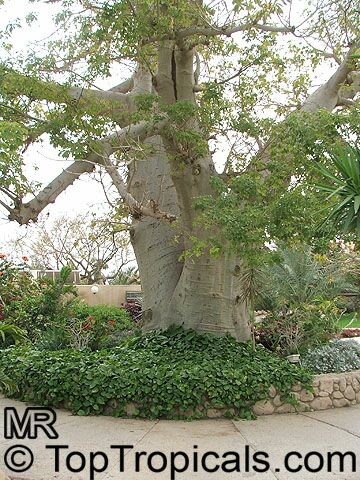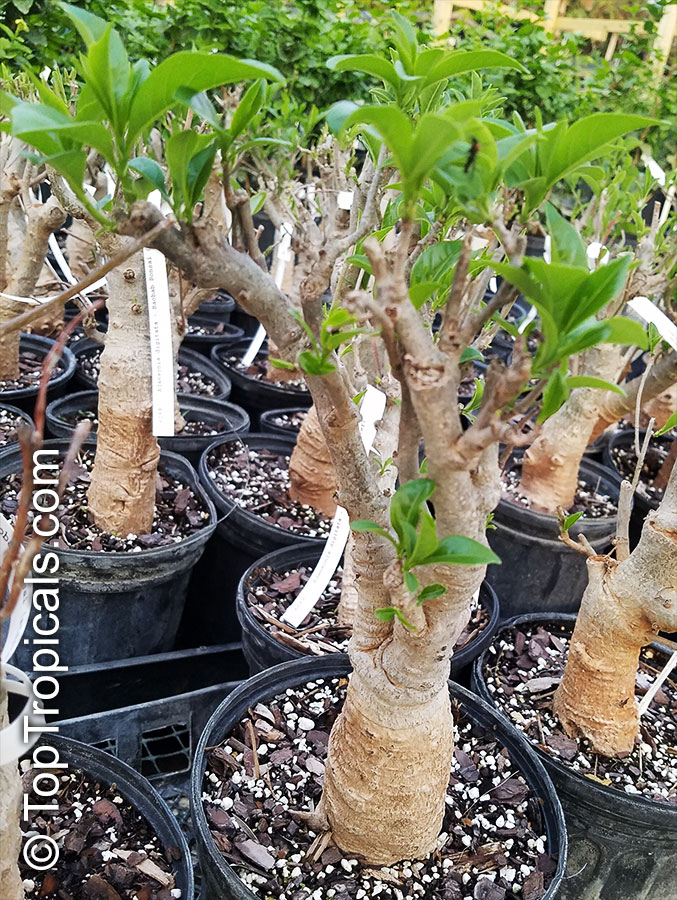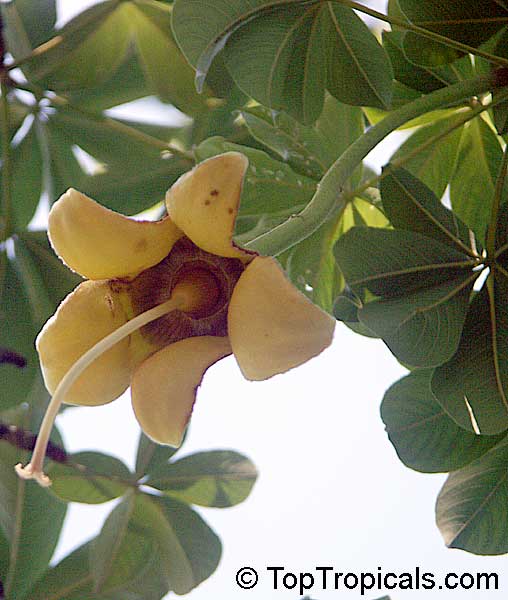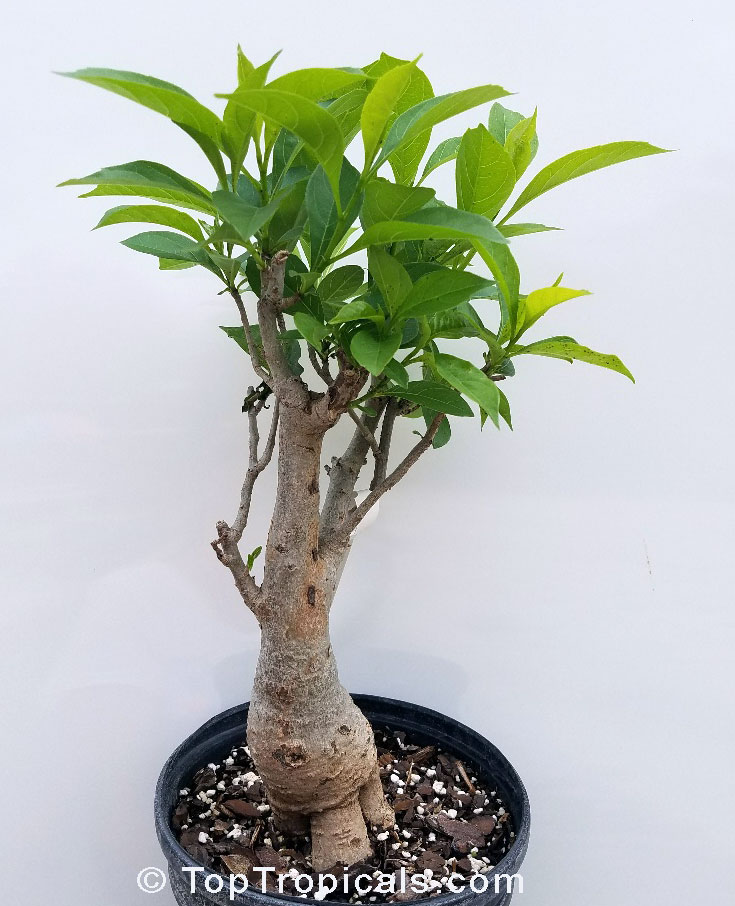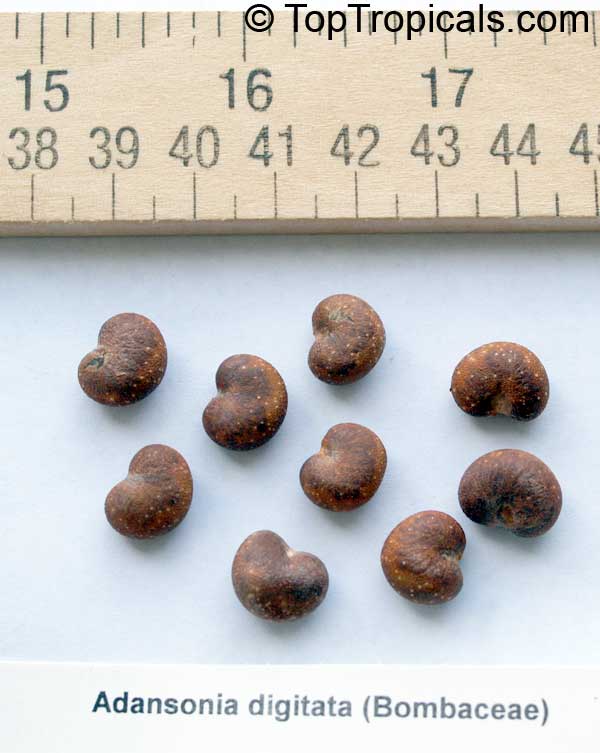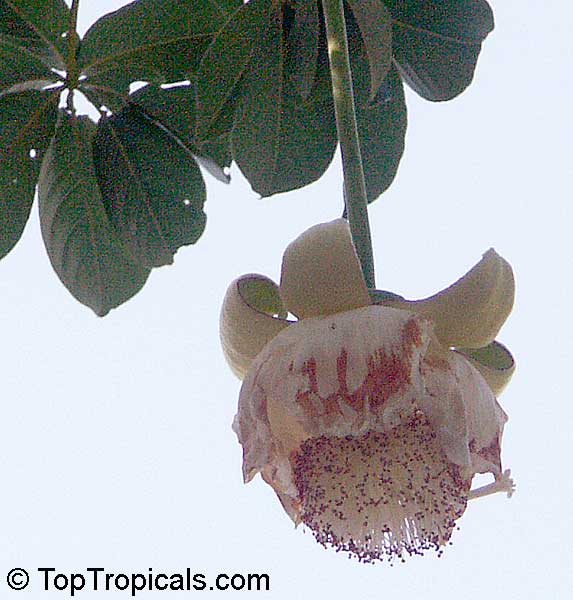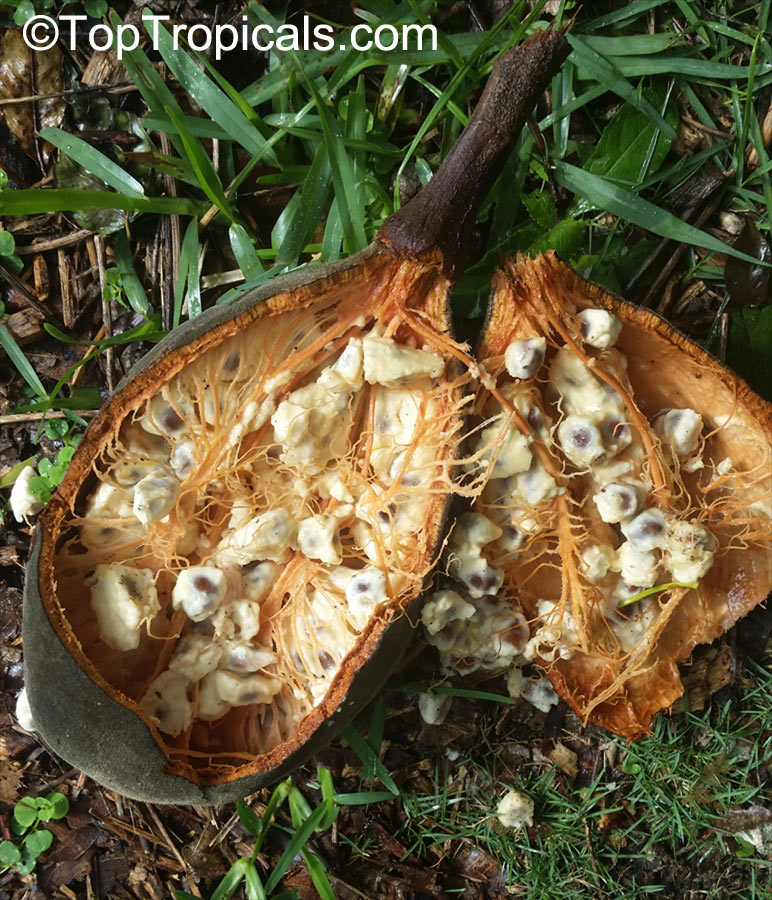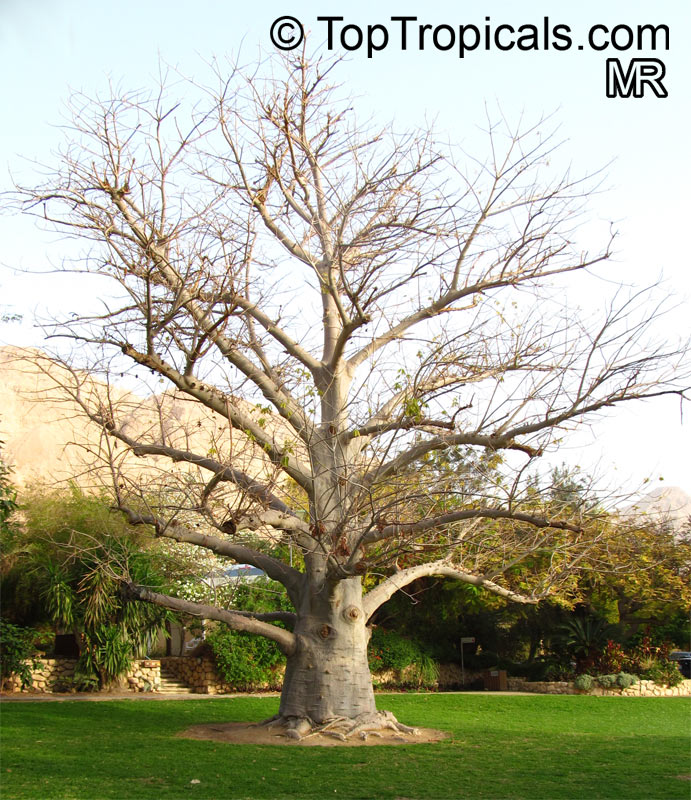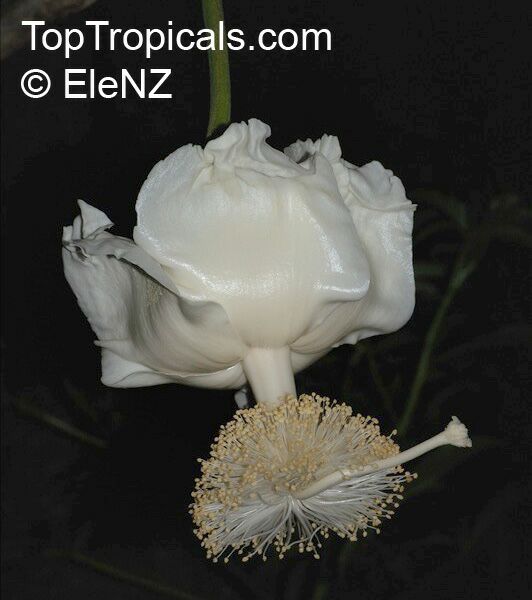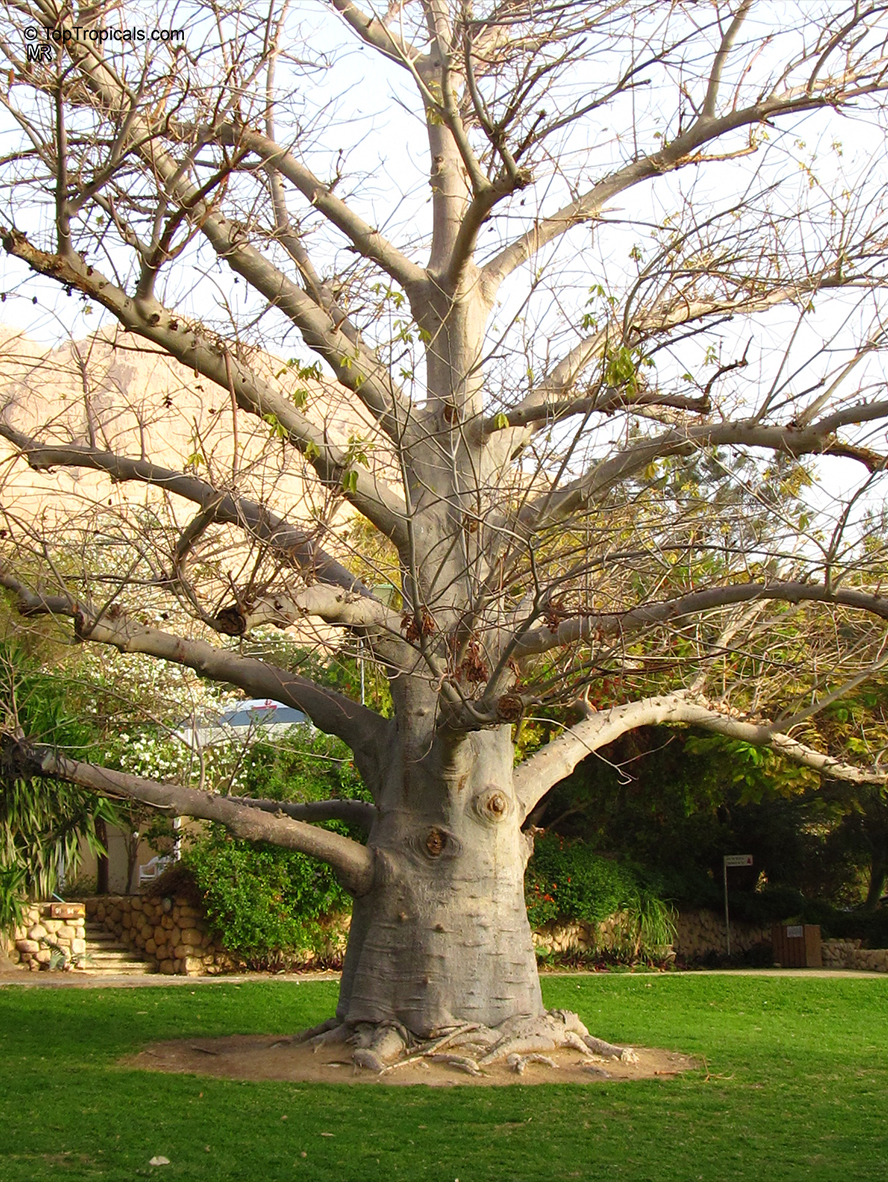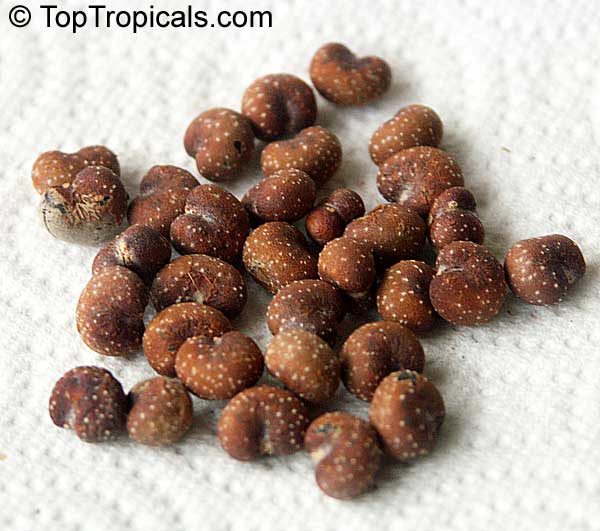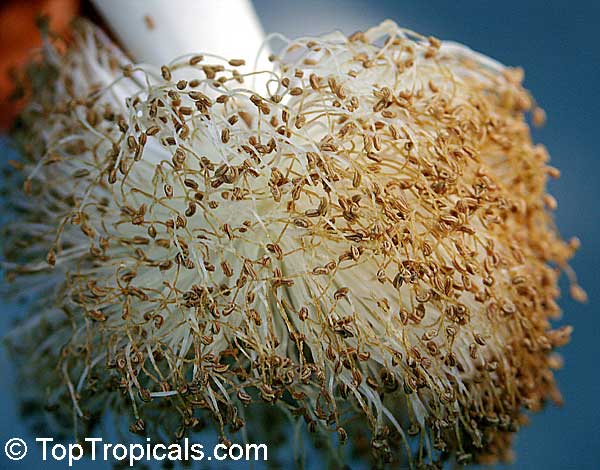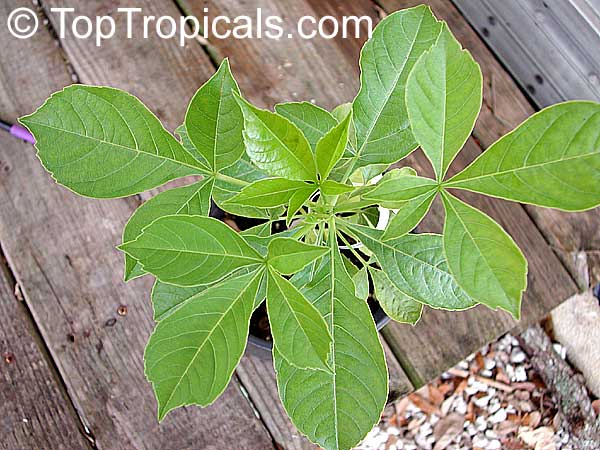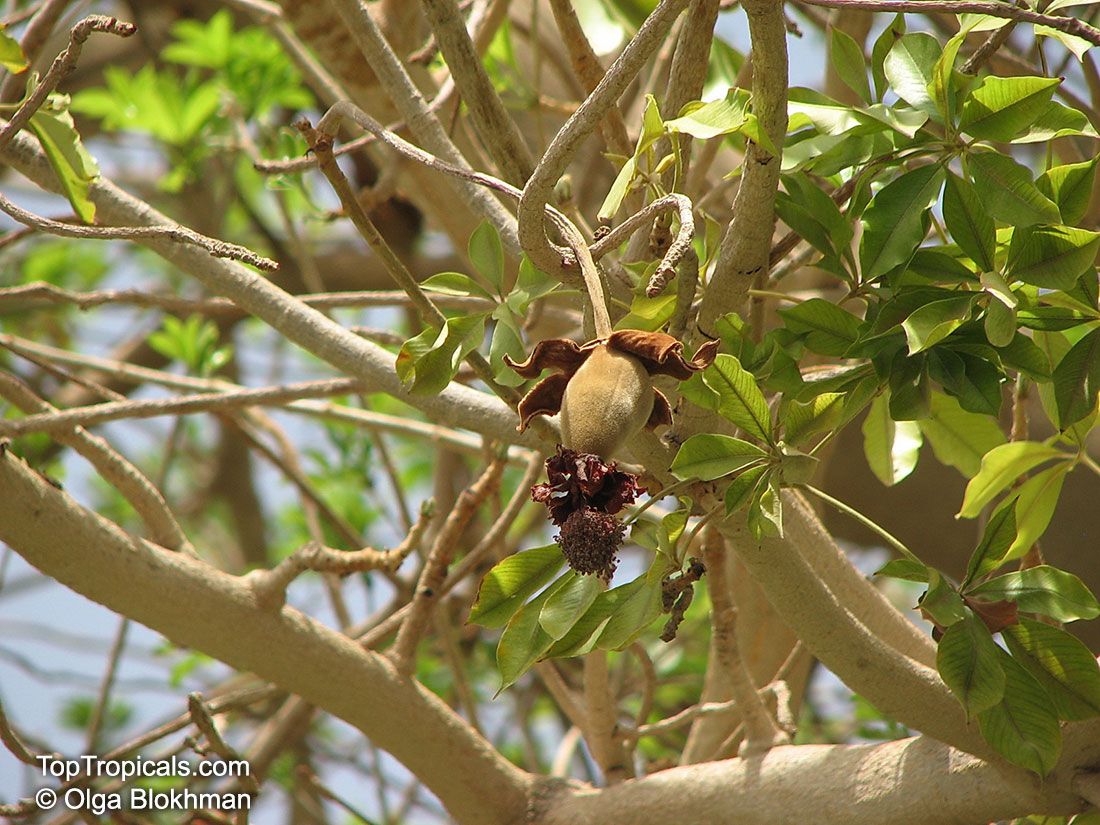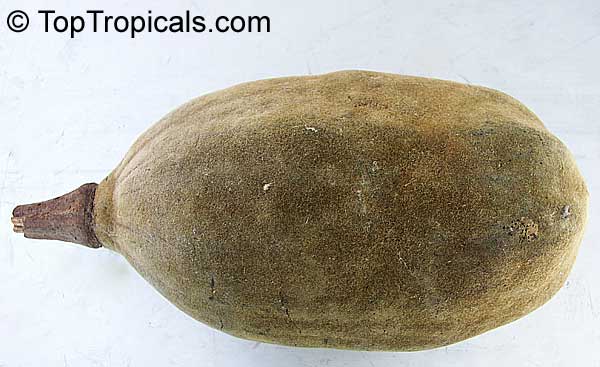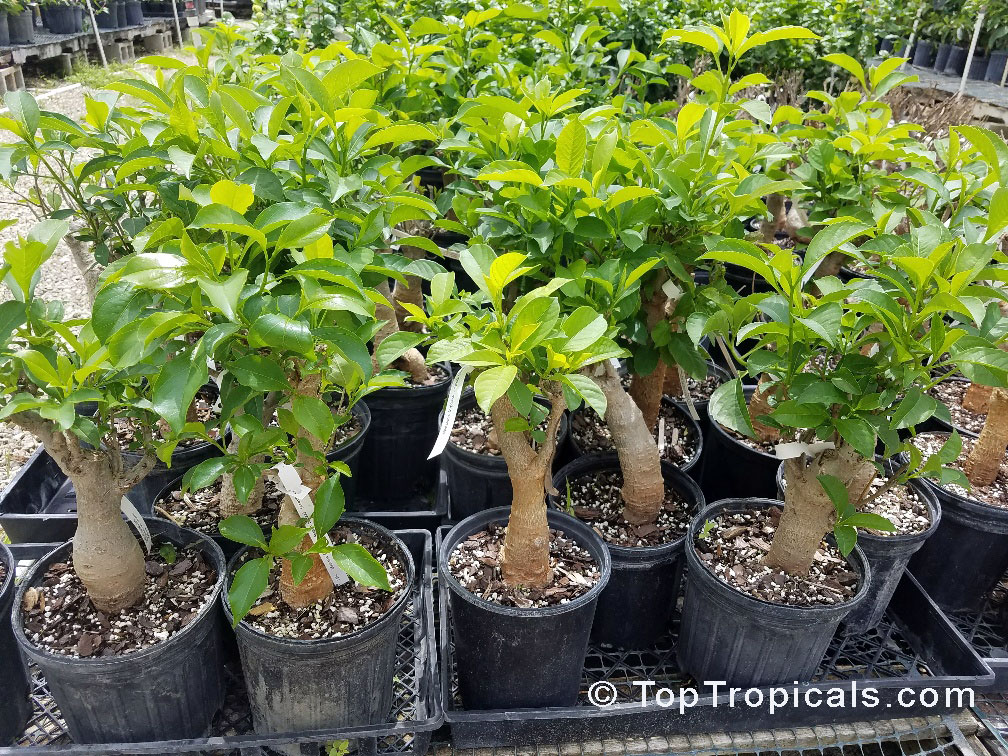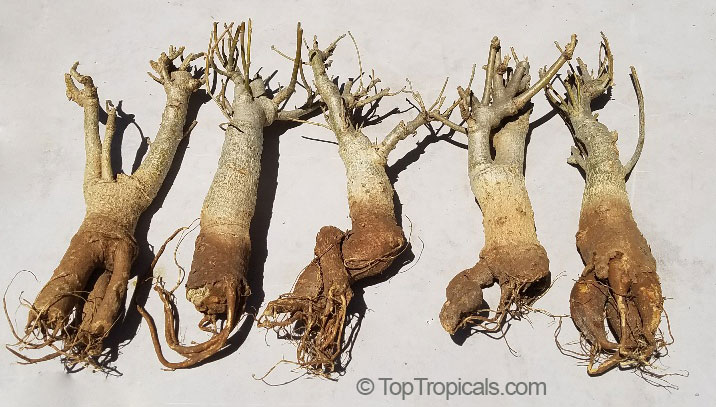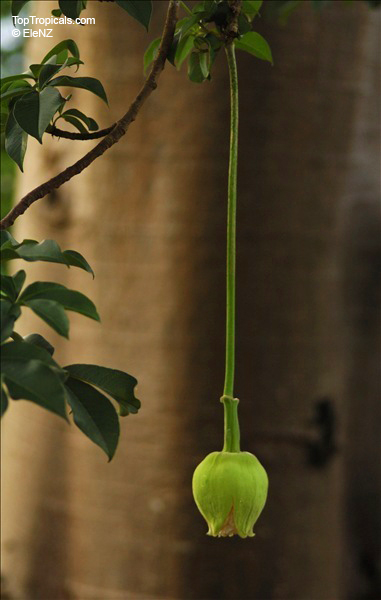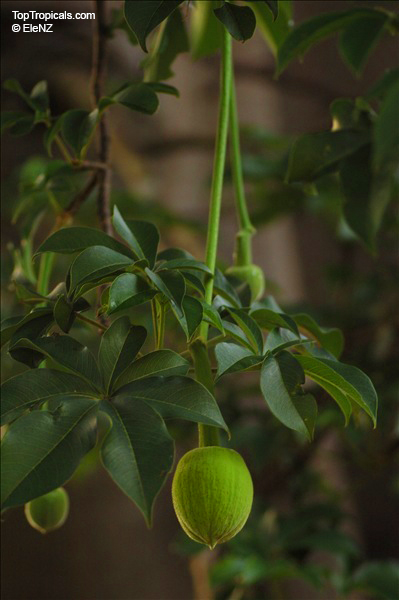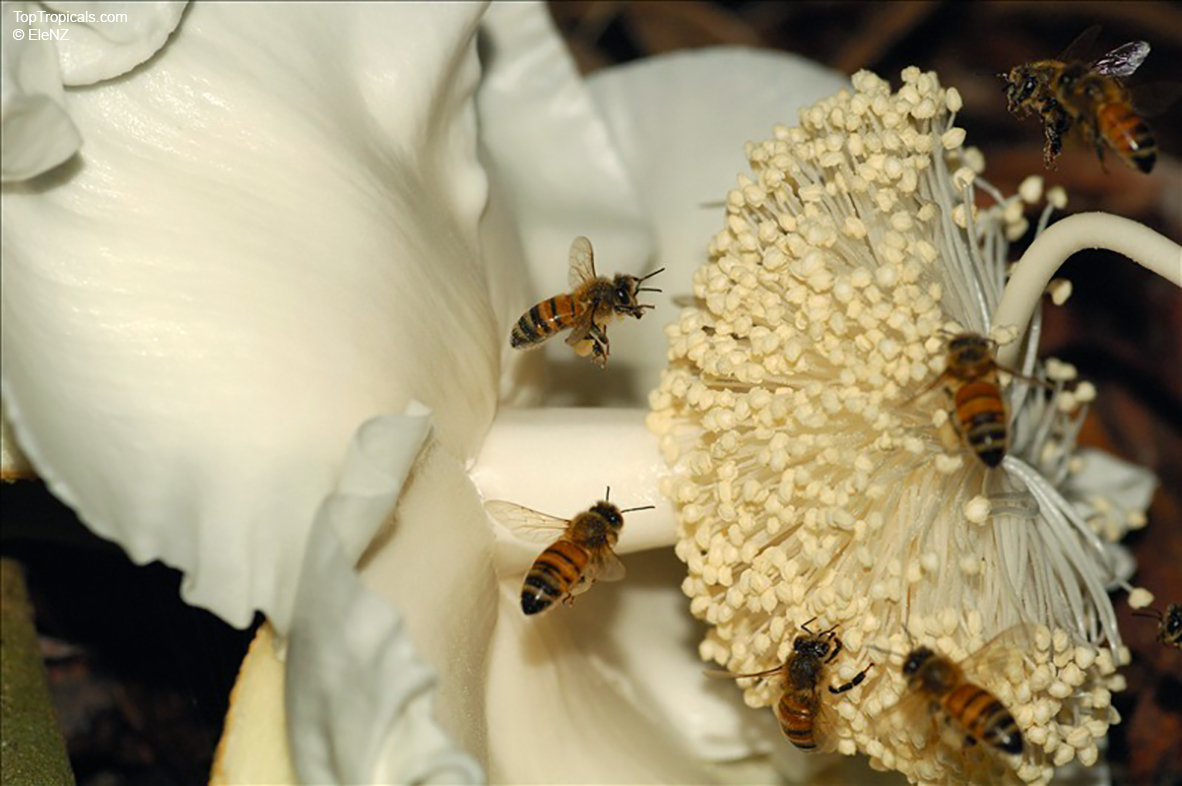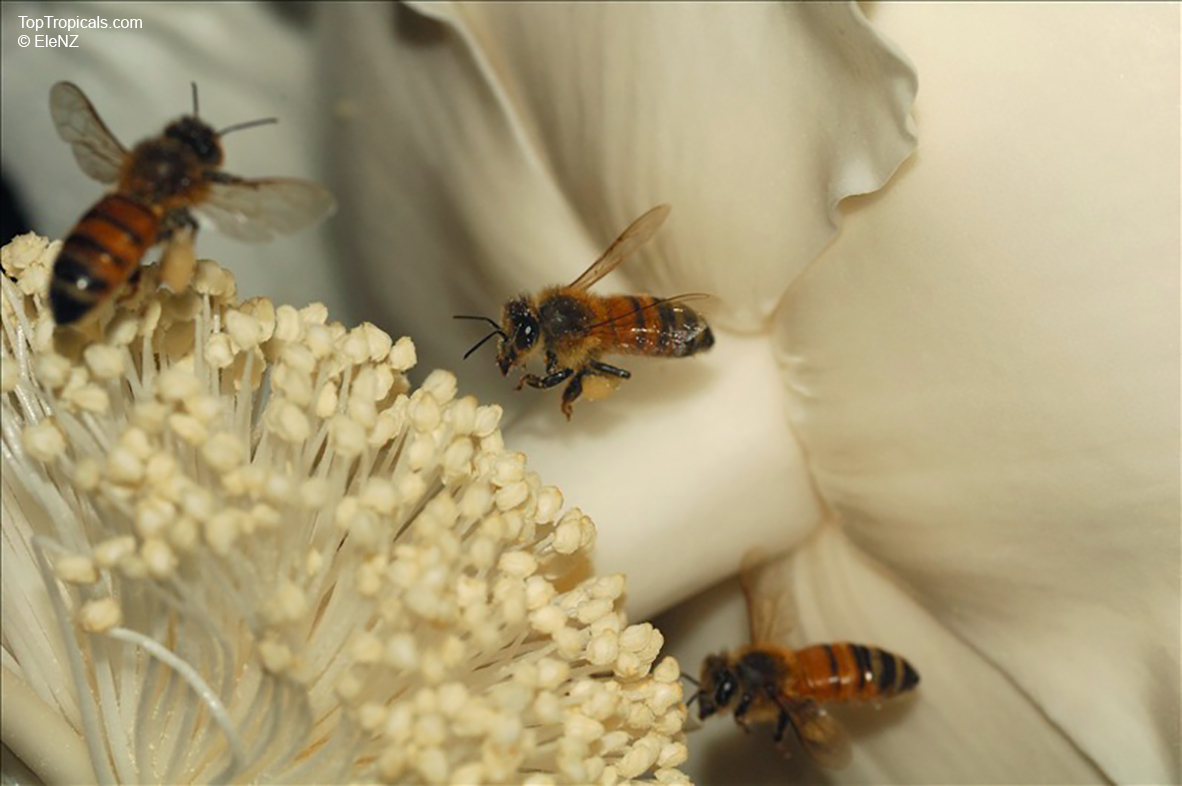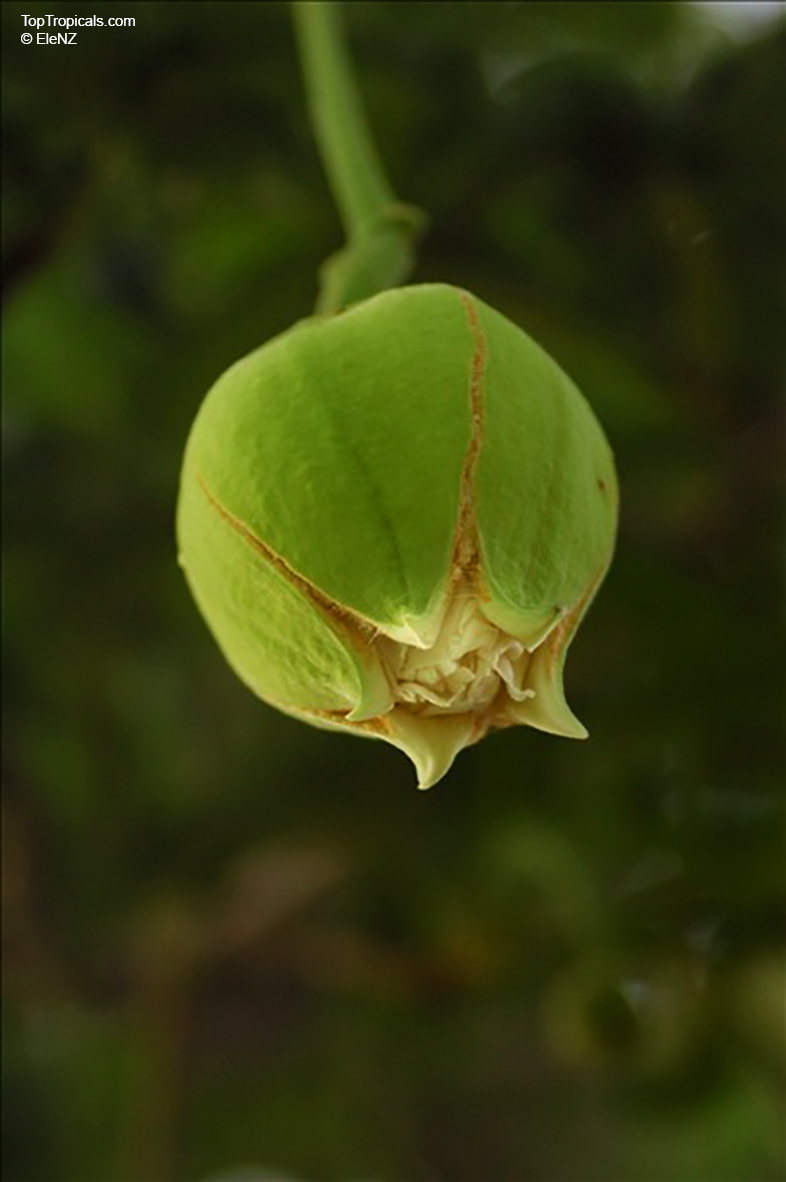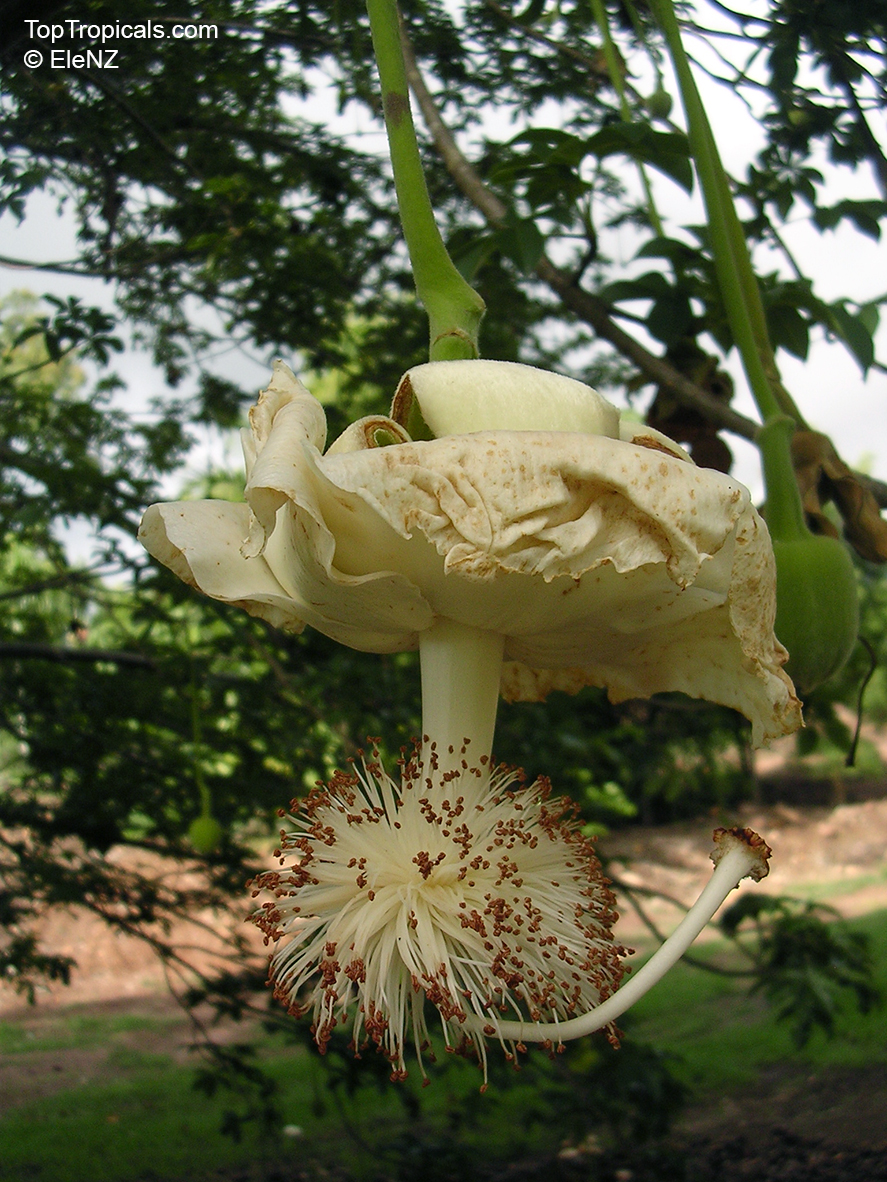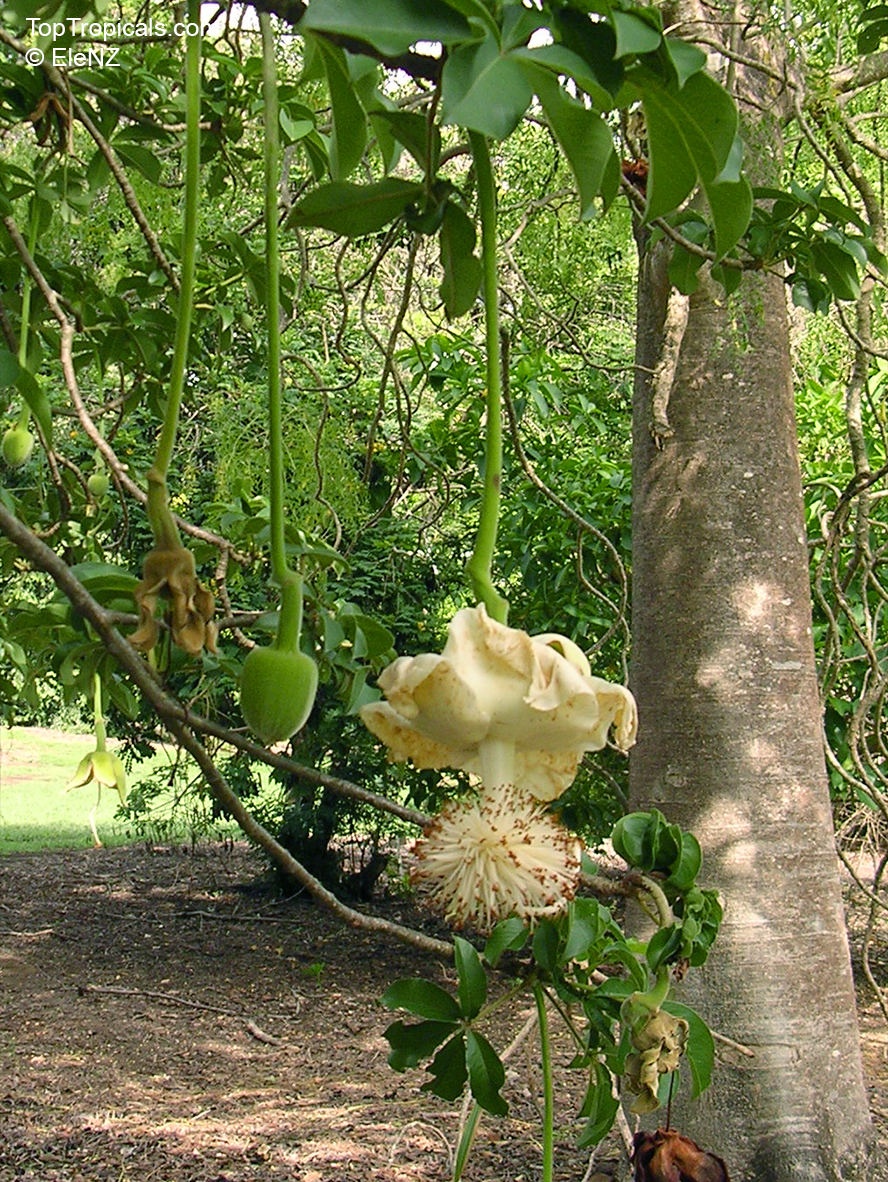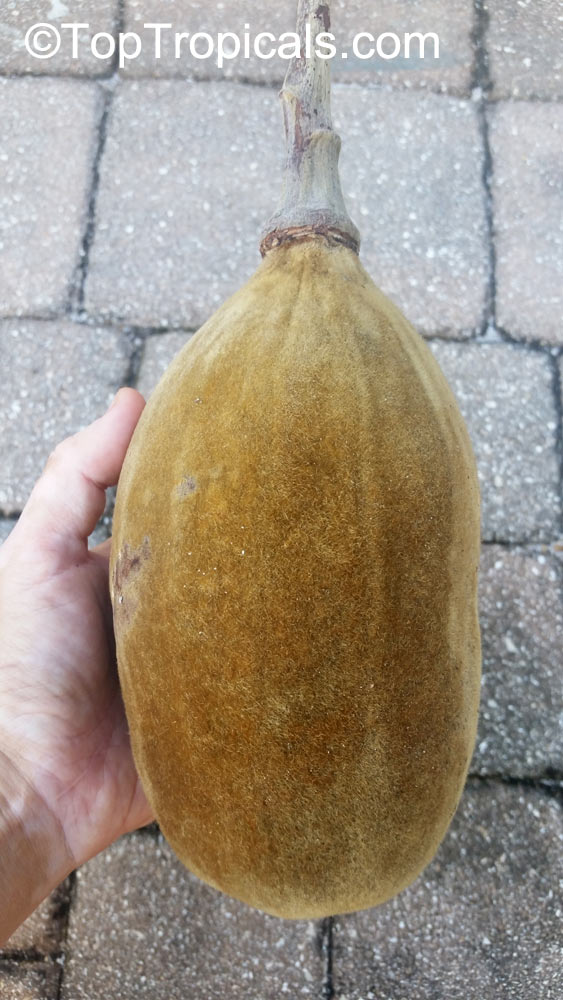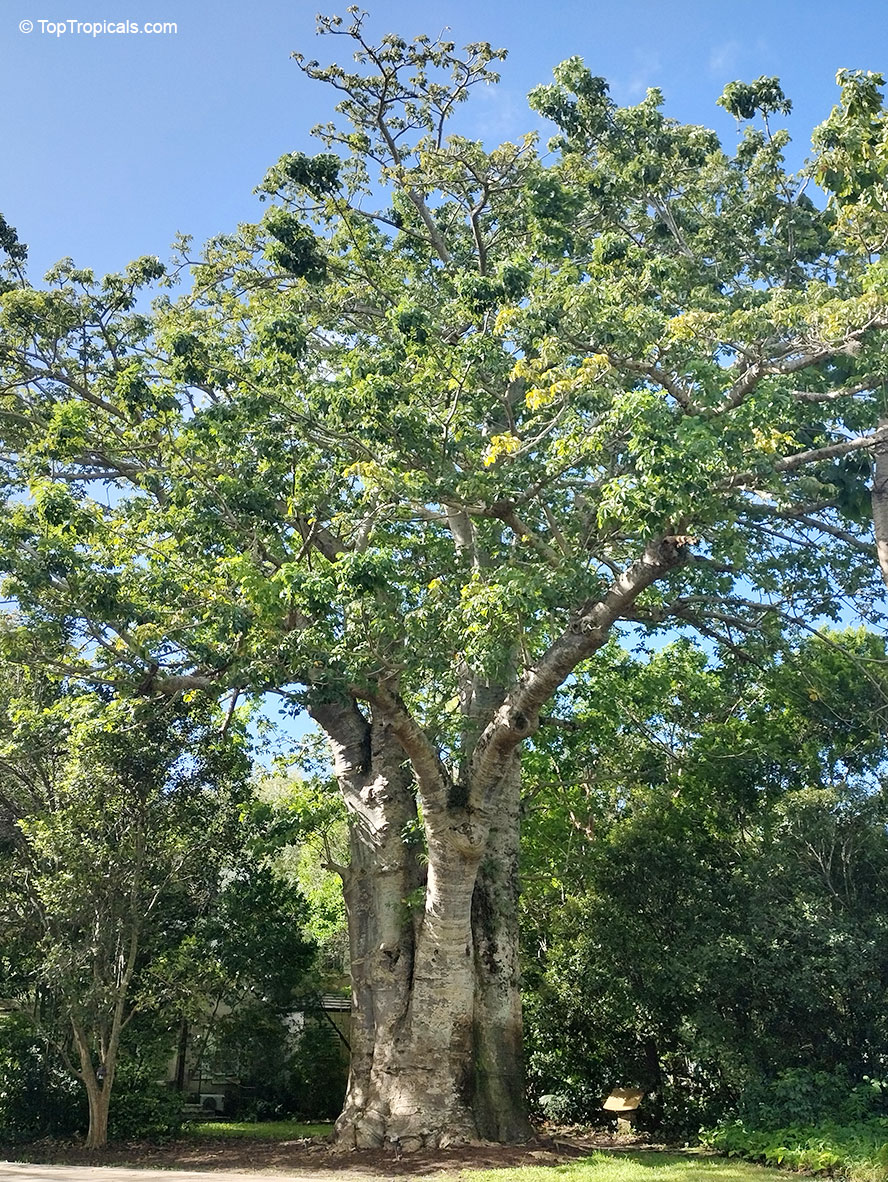Adansonia digitata (Baobab)
Top Tropicals Plant Encyclopedia
Botanical name: Adansonia digitata
Common names: Baobab, Cream of Tartar tree, Monkey-bread tree, Lemonade tree, Upside-down Tree
Family: Malvaceae (Formerly:Bombacaceae)
Subfamily: Bombacoideae
Origin: South Africa







Regarded as the largest succulent in the world, the baobab tree is steeped in a wealth of mystique, legend and superstition wherever it occurs in Africa. It is a tree that can provide food, water, shelter, and relief from sickness. During drought, elephants obtain moisture by chewing on the wood. The stem is covered with a bark layer, which may be 50-100 mm thick. The leaves are hand-sized and divided into 5-7 finger-like leaflets. The baobab is a deciduous, meaning that in winter, it sheds all of its leaves and grows new ones in spring. The large, pendulous flowers (up to 200 mm in diameter) are white and sweetly scented ,that are pollinated by bats. They are followed by velvety fruits full of edible acidic pulp sought by both monkeys and people. In the dryer, temperate regions of Africa, Baobabs are a tree of myth and legend. Baobabs are carefully tended by rural peoples and are particularly useful: the hollow trunks of baobabs are used as dwellings and storehouses, traditional medicines are obtained from its bark, leaves, and fruit. Its bark can be pounded to produce fibers that are used to make baskets, cloth, hats, mats, nets, rope, and strings (interestingly, after the bark is stripped away, the baobab grows new bark). Its leaves are cooked and eaten as greens, and are dried for use as a seasoning and a sauce and stew thickener. Its fruit is rich in vitamin C, calcium, and iron, and is called pain de singe or monkey bread. It can be roasted, ground, and boiled to make a coffee-substitute; it is also soaked in water to make a refreshing drink, and is used as a flavoring. They will make a handsome addition to a large garden, estate, or large parkland providing the soil is not waterlogged. Baobabs cannot tolerate even mild frost. When they are young, baobabs do not resemble their adult counterparts, the stems are thin and inconspicuous, and their leaves are simple and not divided into the five to seven lobes of the adult trees. Saplings can be effectively grown in containers or tubs for many years before becoming too large and requiring to be planted into the ground.
Similar plants: Adansonia digitata (Baobab)
Recommended Fertilizer: SUNSHINE Robusta - Rapid Growth Booster
This item can not be shipped. Pick up only. We can provide local delivery around Ft. Myers or Sebring, Florida. Contact us for an estimate. Non-pickup orders are subject to restocking fees.
